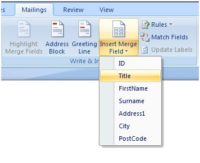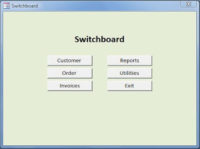Once you have created an Access Database Application to be used by other people, it may well be important for you to prevent users from gaining access to any of its design features. By this I mean, you may not want users to modify your tables, forms and queries etc in design view (inadvertently or…
Hardware Recommendations For Running Access
Hardware matters. Invest in a faster PC and your Microsoft Access databases will run faster. Be alert for sellers packaging fast processors with minimal memory and a slow hard drive to keep prices low. Look at all aspects of the purchase when database speed is a priority. A faster hard drive is worth the investment…
Access CDate() function to SQL Server equivalent
What is the SQL Server equivalent to Access CDate() function? Access SQL CDate([Event Timestamp]) SQL Server Equivalent cast([Event Timestamp] as datetime) convert(datetime, [Event Timestamp])
How to Migrate Data from Access to SQL Server using SSMA (SQL Server Migration Assistant)
SSMA is used to migrate Access databases to SQL Server. This tool converts the Access database to an SQL Server or an SQL Azure database. It is not bundled with SQL Server – you will need to download and install this tool separately. Check your system requirements and view the installation procedure for SSMA. Preparing…
Normalize all constraints’ & indices’ names
Constraints that are created by SSMA or by user via SSMS tend to have ugly names. Worse, auto-generated names are not stable across backups. Meaning if you restore a new database based on a copy of another database, the constraint names will change. That create huge problems during migrations because scripts that references constraint will…
Access Web Apps to be retired
It was announced that Access Services is going to be retired. Details of the announcement may be found here: Updating the Access Services in SharePoint Roadmap. Additional timeline information along with possible methods for exporting your data out of an Access web app may be found here: Access web apps no longer supported. While these articles…
Use properties instead of constant or magic numbers
A common programming mistake is to hard-code literals that corresponds to some property. That is particularly true with certain controls like tab controls & pages. The tab control exposes a Value property that indicates the current tab and the pages contains a PageIndex property that indicates its position in the tabs of the control. Thus,…
Access NZ() function to SQL Server equivalent
What is the SQL Server equivalent to Access NZ() function? Access SQL NZ([Event Timestamp]) SQL Server Equivalent COALESCE([Event Timestamp],0) ISNULL([Event Timestamp],0) * do not confuse this with the Access isnull() function.
Using Microsoft Access Data in a Mail Merge
Suppose you have an Access Database containing the names and addresses of your customers. Every now and again you may want or need to send a standard letter to each customer who has opted in to such mailings. However, you are aware that these letters are going to look so much better, and work so…
How to Display a Form Automatically when your Application Opens
This is a quick tip on how to automatically display a form when the user opens your Access Application. In addition to improving User Friendliness, your database design will also appear much more professional. The step by step instructions below will display the Switchboard form in figure 1 immediately upon the application opening. This will…





